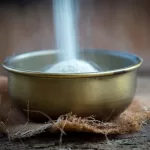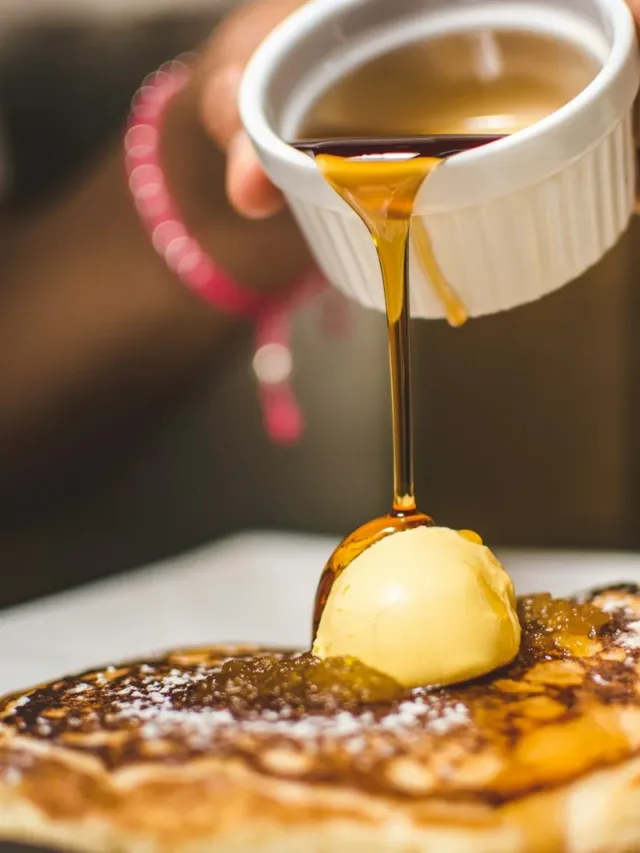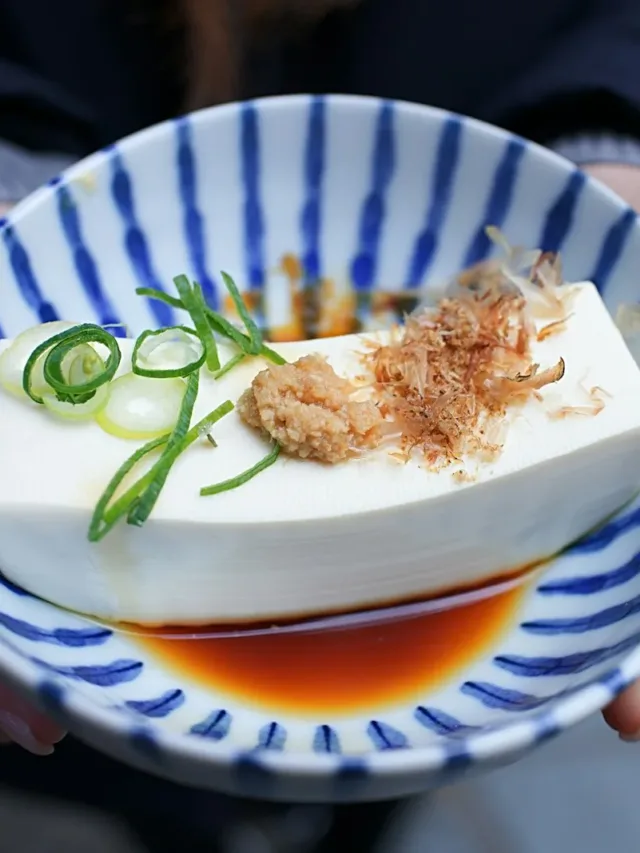Know All About Rava Suji – Uses, Benefits, Recipes, Storage and more
Suji also known as Rava or Semolina is a versatile ingredient that is widely used not just in India but most parts of the world. Suji is commonly used in pasta making, upma, uttapam, halwa and also used to make bread, cakes, and other baked goods.
The process of making suji involves grinding the endosperm of the durum wheat into coarse flour. The resulting flour is then sifted to remove any larger particles, resulting in a fine, granular texture. The color of suji is typically a pale yellow, although it can vary depending on the type of wheat used and the processing methods employed.
Suji or Rava is a coarse flour made from durum wheat. It has been used in Mediterranean and Middle Eastern cuisine for centuries, and is now widely consumed around the world.
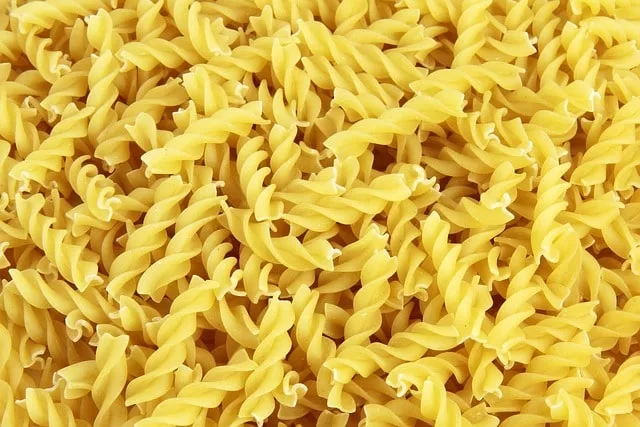
Suji is commonly used to make pasta, including spaghetti, macaroni, and lasagna as well as Indian dishes like upma, dosa etc. One of the reasons why suji is so popular in pasta making is because it has a high gluten content, which gives the pasta its characteristic chewy texture.
In baked goods, suji can help to create a crumbly texture, and it is often used to make cakes and pastries that are dense and moist. It can also be used to make couscous, as well as bread, cakes, and other baked goods. Some people also use it as a coating for fried foods, such as fish or chicken.
Suji or Rava is a key ingredient in many popular dishes from around the world. In Italy, for example, it is used to make pasta dishes such as spaghetti alla puttanesca and lasagna. In India, suji is used to make upma, a savory breakfast dish. In the Middle East, it is used to make couscous, as well as a sweet pudding called halva.
Suji is a good source of protein, fiber, and iron. It is also high in carbohydrates, and has a relatively high glycemic index, meaning it can cause a rapid increase in blood sugar levels. However, when consumed in moderation as part of a balanced diet, rava can be a healthy and nutritious ingredient. However, because it is a wheat product, suji does contain gluten, which can be problematic for people with gluten sensitivities or celiac disease.
Overall, suji is a versatile and nutritious ingredient that has a long history and a wide range of culinary uses. Whether you are making pasta, bread, or a delicious cake, suji is an excellent choice for adding flavor and texture to your recipes.
SUJI ORIGINS
Suji has a long and rich history that spans several centuries and continents. Here is a detailed overview of its history:

The origins of suji can be traced back to the Mediterranean region, where it was first made from durum wheat, a hard, high-protein variety of wheat that was well-suited to the region’s hot and dry climate. The ancient Greeks and Romans were known to consume suji in various forms, including as a porridge and in baked goods.
During the Middle Ages, rava-suji became increasingly popular in Europe, particularly in Italy, where it was used to make pasta. The Italians perfected the art of pasta making, and suji became a staple ingredient in many of their most popular dishes.
In the 19th century, the invention of the roller mill revolutionized the production of suji, making it possible to produce larger quantities of the flour more quickly and efficiently. This led to an explosion in the popularity of suji, and it became a common ingredient in many different types of food.
Today, suji is used in a wide range of dishes, from pasta and bread to cakes and other baked goods. It is also used to make couscous, which is a staple food in North African and Middle Eastern cuisine.
Overall, suji has a long and fascinating history that reflects its versatility and importance as a staple food ingredient in many different cultures and regions of the world.
HOW IS SUJI MANUFACTURED?
Rava Suji is a coarse flour made from durum wheat, which is commonly used to make pasta, couscous, and other dishes. The manufacturing process of suji typically involves the following steps:

- Cleaning and Conditioning: The first step is to clean the wheat grains by removing any dirt, stones, or other impurities. The wheat is then conditioned by soaking it in water to soften the outer layer and make it easier to remove.
- Milling: The conditioned wheat is then ground into flour using a roller mill. The flour is sifted to remove any bran or germ, which is then used to make other products such as bran cereals.
- Separation: The remaining flour is then passed through a series of sifters and purifiers to separate the suji from the finer flour particles. The rava is typically extracted from the inner part of the wheat kernel, while the finer flour particles come from the outer layers.
- Grading: The suji is then graded based on its particle size and quality. Larger particles are used for making pasta, while smaller particles are used for couscous and other dishes.
- Packaging: Finally, the suji is packaged and shipped to food manufacturers or distributors for further processing or sale.
Overall, the manufacturing process of suji is a complex and highly controlled process that requires careful attention to detail to produce high-quality rava-suji for use in a wide range of food products.
How to make and preserve SUJI at Home?
Suji Rava production at home requires a wheat grinder or mill to grind whole durum wheat into fine particles. Here are the steps for producing suji at home:
- Clean the whole durum wheat grains to remove any dirt or debris.
- Grind the wheat grains in a wheat grinder or mill. The setting should be adjusted to produce a fine consistency.
- Sift the ground wheat using a fine mesh sieve to separate the coarse particles from the fine semolina.
- Store the suji in an airtight container in a cool, dry place until ready to use.
The shelf life of suji depends on how it is stored. Suji Rava stored in an airtight container in a cool, dry place can last for up to 6-12 months. However, if exposed to moisture, suji can spoil or develop mold, reducing its shelf life.
To preserve rava suji for longer, it is recommended to store it in an airtight container in the refrigerator or freezer. Suji can be stored in the refrigerator for up to 1 year and in the freezer for up to 2 years. Before using frozen Suji, allow it to thaw completely at room temperature.
In summary, suji can be produced at home using a wheat grinder or mill. The shelf life of suji can be extended by storing it in an airtight container in a cool, dry place, or in the refrigerator or freezer.
Is SUJI HEALTHY for you?
Suji is widely used in almost every household in the world not just because of its taste but also because of its health benefits. Here, are some of the main health benefits associated with suji:
Rich in protein: Suji is a good source of protein, which is important for maintaining and repairing tissues in the body. One cup of cooked suji contains around 6 grams of protein, making it a relatively high-protein food.
Good source of fiber: Suji or Rava contains fiber, which can help to promote digestive health and reduce the risk of certain diseases. One cup of cooked suji rava contains around 2 grams of fiber, or about 8% of the daily recommended intake.
Rich in iron: Suji is a good source of iron, which is important for maintaining healthy blood cells and preventing anemia. One cup of cooked suji contains around 1.4 milligrams of iron, or about 8% of the daily recommended intake.
Low in fat: Suji is a relatively low-fat food, which can be beneficial for weight management and overall health. One cup of cooked suji rava contains just 0.5 grams of fat.

Good source of carbohydrates: Suji is a rich source of carbohydrates, which are important for providing energy to the body. One cup of cooked suji rava contains around 40 grams of carbohydrates.
May help to regulate blood sugar: Suji has a relatively low glycemic index, which means it may help to regulate blood sugar levels and prevent spikes in insulin. This can be particularly beneficial for people with diabetes or those at risk of developing the condition.
Overall, suji can be a nutritious and healthy addition to a balanced diet, particularly when consumed in moderation as part of a varied and nutrient-rich diet.
WHO SHOULD AVOID SUJI?
Suji or Rawa is generally safe for most people to consume, but there are a few groups of people who may need to limit their intake or avoid it altogether:
People with celiac disease or gluten sensitivity: Suji is a wheat product and therefore contains gluten, which can cause problems for people with celiac disease or gluten sensitivity. These individuals should avoid suji and other wheat-based products to prevent adverse health effects.
People with wheat allergies: Some people may be allergic to wheat and experience an allergic reaction when consuming suji. In these cases, it is important to avoid suji and other wheat-based products to prevent a potentially severe reaction.
People with digestive issues: Suji can be difficult to digest for some people, particularly those with irritable bowel syndrome (IBS) or other digestive issues. These individuals may experience bloating, gas, or other digestive symptoms after consuming suji and may need to limit their intake or avoid it altogether.
People on a low-carbohydrate diet: Suji or Rawa is a relatively high-carbohydrate food and may not be suitable for people on a low-carbohydrate diet. These individuals may need to limit their intake of suji and other high-carbohydrate foods to maintain their desired dietary goals.
It is important to note that while suji rava may not be suitable for everyone, it can be a nutritious and healthy addition to a balanced diet for most people. If you have any concerns about consuming suji or other foods, it is always best to consult with a healthcare professional or registered dietitian.
What is made from Suji?
Suji rava is used to make a wide range of food products, including:
Pasta: Suji is a key ingredient in many types of pasta, including spaghetti, macaroni, and lasagna.
Couscous: Couscous is a traditional North African and Middle Eastern dish made from suji.
Porridge: Suji is used to make a type of porridge called suji pudding or cream of wheat, which is a popular breakfast food in many parts of the world.
Halwa: Halwa is a sweet dish made from suji, sugar, ghee, and nuts. It is popular in India, the Middle East, and other parts of the world.
Upma: Upma is a savory Indian dish made from suji, vegetables, and spices.

Bread: Suji can be used to make bread, particularly in southern Europe, where it is sometimes used to make focaccia and other types of bread.
Cakes and desserts: Suji is sometimes used as a flour substitute in cakes and desserts, particularly in Middle Eastern and Indian cuisine.
Snacks: Suji can be used to make a variety of savory snacks, including fried balls, cutlets, and fritters.
WHICH COUNTRIES PRODUCE RAVA SUJI?
Suji production is mainly concentrated in countries that produce large quantities of durum wheat, the hard wheat variety used to make suji flour. Some of the largest producers of suji in the world include:
Italy: Italy is the largest producer of semolina in the world, with a long history of pasta-making and other culinary uses for semolina.
India: India is one of the largest producers of wheat in the world and also produces significant quantities of suji. In fact, India is the second-largest producer of suji globally after Italy.
Turkey: Turkey is also a major producer of semolina, and is known for its production of couscous, a traditional Middle Eastern and North African dish made from suji.
Algeria: Algeria is a major producer of durum wheat and suji, and couscous is a staple food in Algerian cuisine.
Tunisia: Tunisia is another major producer of suji rava and durum wheat, and is known for its production of high-quality couscous.
Morocco: Morocco is a significant producer of durum wheat and suji, and couscous is a staple food in Moroccan cuisine.
France: France is a major producer of durum wheat and suji, and is known for its production of high-quality pasta made from suji.
United States: The United States is a significant producer of durum wheat and suji, and is home to several large pasta-making companies.
Other countries that produce significant quantities of suji include Canada, Spain, Greece, and Syria. Overall, suji production is concentrated in regions with a long history of durum wheat cultivation and a strong culinary tradition that incorporates rava suji into a variety of dishes.
SUJI AND ITS SIGNIFICANCE IN INDIA
India is one of the largest producers of wheat in the world and also produces significant quantities of rava suji. In fact, India is the second-largest producer of suji globally after Italy. Suji is commonly used in Indian cuisine to make dishes such as upma, halwa, and sheera.
Rava Suji, like many other grains, has religious significance in various cultures and traditions. Here are a few examples:
In Hinduism: Semolina, known as “suji” or “rava,” is used in various Hindu religious rituals, particularly in South India. It is often used as an offering to deities and is also used in certain religious preparations.
In Judaism: Suji is used in the preparation of matzo, an unleavened bread that is traditionally eaten during the Jewish holiday of Passover.
In Islam: Suji is sometimes used to make a sweet pudding called “halwa,” which is often served during Ramadan, the month of fasting in Islam.
In Christianity: Suji is not specifically mentioned in the Bible, but it is often used in Italian cuisine, which has strong Catholic roots. It is sometimes used to make a type of pudding called “semolina cake,” which is sometimes served during religious holidays.
In general, semolina and other grains has great significance in India and are widely used in many religious traditions for their nutritional value and symbolic significance. They are often used as offerings, in religious preparations, or as part of traditional meals and feasts.
THE CHEMISTRY OF SUJI
The pH of suji varies depending on the processing and milling methods used. However, on average, semolina has a pH of around 5.0 to 6.0, which is slightly acidic.
As for the glycemic index (GI), semolina has a high GI value, which means it can cause a rapid rise in blood sugar levels after consumption. The exact GI value of semolina can vary depending on factors such as the cooking method, serving size, and other foods consumed at the same time. However, on average, suji has a GI value of around 70-80, which is considered high.
For people with diabetes or other conditions that require blood sugar management, it is important to be mindful of the glycemic index of foods and to consume them in moderation or in combination with other low-GI foods to minimize blood sugar spikes. However, for healthy individuals, suji can be a nutritious and satisfying food when consumed in moderation as part of a balanced diet.
WHAT DISHES TO MAKE FROM SUJI?
Suji is a popular ingredient used in a variety of dishes. Here are a few commonly prepared Indian dishes:
Upma – Upma is a savory breakfast dish made with roasted suji (semolina), vegetables, and spices. It is a popular dish in South India.
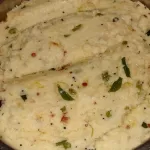
Suji halwa – Suji halwa is a sweet dish made with roasted suji, sugar, ghee, and water or milk. It is a popular dessert in India and Pakistan.
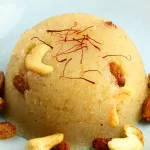
Suji idli – Suji idli is a variation of the traditional South Indian breakfast dish made with suji, yogurt, and spices. It is a quick and easy recipe that does not require fermentation.
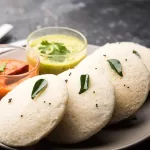
Suji dosa – Suji dosa is a crispy and savory pancake made with suji, rice flour, and spices. It is a popular breakfast or snack item in South India.
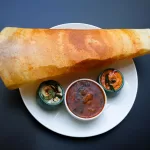
Suji ka cheela – Suji ka cheela is a savory pancake made with suji, yogurt, and vegetables. It is a healthy and filling breakfast or snack item. It is a dish similar to besan chilla where the gram flour (Besan) is replaced with Suji. Here is a simple recipe for Besan Chilla which can easily be changed to Suji Chilla.

Suji ki kheer – Suji ki kheer is a creamy dessert made with suji, milk, sugar, and cardamom. It is a popular dessert in North India.
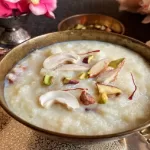
Suji uttapam – Suji uttapam is a savory pancake made with suji, yogurt, and vegetables. It is a quick and easy recipe that does not require fermentation.
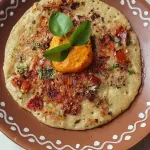
Suji ka pua – Suji ka pua is a sweet dish made with suji, sugar, milk, and cardamom. It is a popular dessert in North India. It is a modified version of Gulgule by replacing wheat flour with suji or semolina.
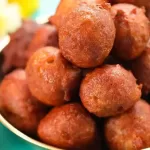
Suji ka dhokla – Suji ka dhokla is a steamed cake made with suji, yogurt, and spices. It is a popular snack item in Gujarat, India.
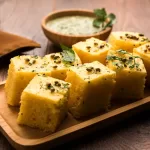
Suji ka pizza – Suji ka pizza is a healthy and delicious pizza made with a suji crust and topped with vegetables and cheese.
Suji ka namak pare – Suji ka namak pare is a savory snack made with suji, flour, and spices. It is a popular snack item in India.
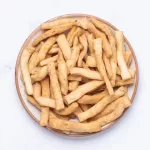
Suji ka upma cutlet – Suji ka upma cutlet is a crispy and delicious snack made with leftover upma, potatoes, and spices.

Suji ka pakora – Suji ka pakora is a crispy and savory fritter made with suji, flour, and vegetables. It is a popular snack item in India.
Pitha: Pitha is a type of traditional Assamese rice cake that is often made with suji, along with rice flour and jaggery (a type of cane sugar). Pitha is typically served during festivals and special occasions.
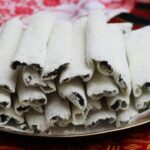
Payas: Payas is a sweet pudding made with suji, milk, and sugar, and flavored with cardamom and saffron. It is often served during Bihu festivals and special occasions.
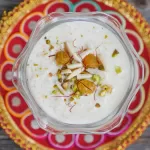
Muri ghonto: Muri ghonto is a savory dish made with fish head, rava suji, and vegetables such as potatoes, eggplant, and beans. The ingredients are cooked together in a spicy curry, and the dish is typically served with rice. This dish is often prepared in state of Bengal and Bihar.
Suji ke laddu: Suji laddu is a sweet made with roasted semolina, sugar, ghee, and cardamom. The ingredients are formed into small balls and served as a dessert.
Chira doi: Chira doi is a traditional Assamese dessert made with flattened rice flakes (known as chira), semolina, yogurt, and jaggery. The ingredients are mixed together and chilled before serving.
These are just a few examples of the many ways that rava suji is used in Assamese cuisine. Suji is a versatile ingredient that can be used in both sweet and savory dishes, and is an important part of many traditional Assamese recipes.
Which brand of Suji should you buy?
There are many popular suji brands available in various parts of the world, here are a few examples:
Bob’s Red Mill: This brand offers a range of high-quality suji flours made from durum wheat, including fine and coarse varieties.
Hodgson Mill: This brand offers a range of suji flours made from durum wheat, including a fine-grind variety that is ideal for making pasta.
Golden Temple: This brand offers a range of suji flours made from durum wheat, including fine and coarse varieties that are suitable for making pasta, bread, and other baked goods.
King Arthur Flour: This brand offers a range of high-quality semolina flours made from durum wheat, including fine and coarse varieties that are ideal for making pasta and bread.

HR Gunishka: This brand offers a range of suji or wheat products, including coarse and fine varieties made from durum wheat. Their products are commonly used in Indian cuisine to make dishes such as upma, idlis, and dosas.
These are just a few examples of popular suji brands. There are many other brands available in various parts of the world, and the availability of specific brands may vary depending on your location.
Hope, you found this article useful and gained a bit more knowledge of Suji.
